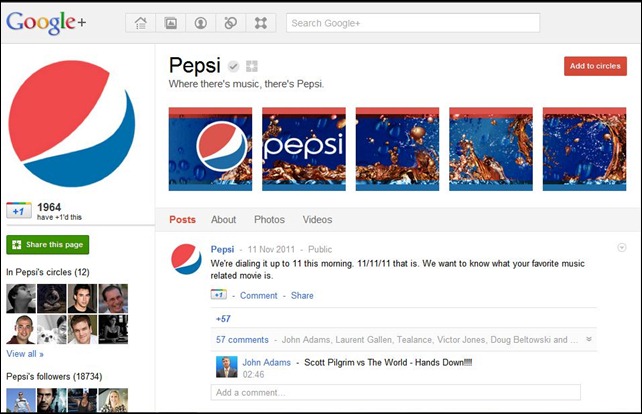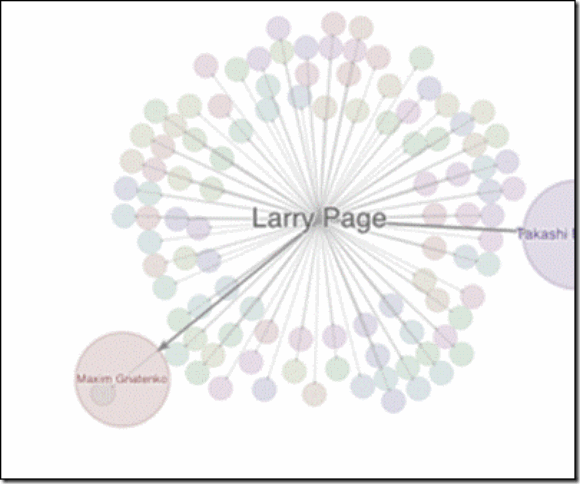 After much anticipation, Google finally allowed brands to create their pages on Google+ social network earlier this month. With lots of pre-launch speculation as to features, functionality and the impact Google+ Pages for brands could have on search and on Facebook pages, many brands will surely be very very excited to make their presence felt on the latest social media platform. An early adoption may boost the brand numbers in short run but a close look is a must before diving in.
After much anticipation, Google finally allowed brands to create their pages on Google+ social network earlier this month. With lots of pre-launch speculation as to features, functionality and the impact Google+ Pages for brands could have on search and on Facebook pages, many brands will surely be very very excited to make their presence felt on the latest social media platform. An early adoption may boost the brand numbers in short run but a close look is a must before diving in.
While it will be essential that brands make the most of the functionalities and features available to add something new and fresh to their social media user experience, emphasis will also be on the way they integrate their approach to social media and SEO which would be a very important element of Google+ pages.
Impact on brand search
Knowing Google, it would have been hard to believe that they would not have used their core product to jump start the Google+ page promotion. Google search is the single largest provider of information on the net today and not using it to its benefit would simply not make sense. Thus, the new Direct Connect feature – a feature that will enable users to search for brand pages within the Google search page by simply adding ‘+’ before their search has been established. This not only gives a great boost to the brand page but also thumps Facebook page search abilities which are far more complex.

Google Search for a Google+ page of Pepsi
Also, the tie-in between +1’s and brand page content will be a very important search engine optimization tool now. It is widely thought that content receiving +1’s, whether this is inside the Google+ platform or indeed on a brand’s own website, will appear considerably higher in organic searches. Additionally, when a user is logged-in to their Google+ account, Google also takes the +1’s of both the user and their connections/circles into account when delivering the search results it serves to users. Essentially, Google is assigning weight to social recommendations through Google+ as a metric of content quality and relevance to the user, making search results more personalized in a way we have not seen before.
The clean and clear advantage
The Google+ page retains a very bright, big colorful layout. It feels less “narrow” than Facebook, and one does not have to scroll down so much to see previous conversations. This makes photos a lot easier to view, also, with an easy-to-spot conversation bubble to notify which photos had comments attached to them. There’s just something about that clean design that is a breath of fresh air from the ad-and-content-cluttered Twitter and Facebook.
On first look, Google+ brand pages may look remarkably similar to the layout we have come to know and love on Facebook. However, it is in the additional visual features available beneath the surface where things start to come to life on Google+. Like the dynamic profile pic option that changes every time you click on it or the animated header profile picture gallery, Google has added stuff that are nice and pleasant on the eye.
Another Wave
Google wave may have died but Google has introduced Ripples! It shows, in a web diagram, how a content piece has been shared, who are the main influencers on the page, and other fascinating statistics that one can’t find anywhere else.
This helps in making the page a lot more convenient and easier to interpret. Add to this, the Hangout feature will surely help bring down the gap between the brand and the people who follow it. A direct interaction with those who run the brand will only serve to establish a better relationship.
Not yet there
While a direct connect and a straight link to YouTube will add to Google+ pages advantages, the lack of APIs will hurt as much. Facebook was not just a standalone platform. It was a ground to work on. It has helped make industries out of game makers and application developers. How Google+ pages counter that is yet to be seen.
Also, the strict policy of not allowing and contest or promotion on the page is a hurdle. One cannot ignore the fact that promotions and offer are key to social media marketing in our region. Thus, while it makes sense to give Google+ a thought, a wait and watch approach may give a clearer picture to the brand managers.










![clip_image002[6]_thumb[2]](https://windchimes.co.in/blog/wp-content/uploads/2011/11/clip_image0026_thumb2_thumb.gif)
![clip_image004[6]_thumb[2]](https://windchimes.co.in/blog/wp-content/uploads/2011/11/clip_image0046_thumb2_thumb.gif)
![clip_image006[6]_thumb[2]](https://windchimes.co.in/blog/wp-content/uploads/2011/11/clip_image0066_thumb2_thumb.gif)
![clip_image008_thumb[2]](https://windchimes.co.in/blog/wp-content/uploads/2011/11/clip_image008_thumb2_thumb.gif)
![clip_image010_thumb[2]](https://windchimes.co.in/blog/wp-content/uploads/2011/11/clip_image010_thumb2_thumb.gif)
![clip_image012_thumb[2]](https://windchimes.co.in/blog/wp-content/uploads/2011/11/clip_image012_thumb2_thumb.gif)
![clip_image014_thumb[2]](https://windchimes.co.in/blog/wp-content/uploads/2011/11/clip_image014_thumb2_thumb.gif)
![clip_image016_thumb[2]](https://windchimes.co.in/blog/wp-content/uploads/2011/11/clip_image016_thumb2_thumb.gif)